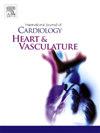孤立冠状动脉旁路移植术后30天内意外再入院的发生率、时间和变化
IF 2.5
Q2 CARDIAC & CARDIOVASCULAR SYSTEMS
引用次数: 0
摘要
背景冠状动脉旁路移植术(CABG)是最常见的心脏手术,尽管临床和政策越来越关注减少再入院,但对冠状动脉旁路移植术后意外再入院的情况知之甚少。我们评估了CABG术后30天内意外再入院的发生率、时间和原因,并评估了澳大利亚和新西兰各医院再入院率的差异。方法:我们从2013年至2017年在澳新银行所有公立和大多数私立医院中确定了孤立的CABG手术。主要结局是出院30天内意外(急性)再入院。使用考虑患者特征差异的分层广义线性模型估计医院特定风险标准化再入院率(RSRRs)和95% CI。结果共纳入52104例患者,平均年龄66.1±9.9岁,女性17.6%,急性期30.7%。30天意外再入院率为12.7% (n = 6,613),紧急手术后更高(16.2%,n = 2,595)。再入院率在第2-4天达到峰值,再入院的中位时间为9 (IQR: 4-17)天。手术并发症和胸痛是再入院最常见的诊断。风险调整模型的效果令人满意(C-statistic = 0.62)。37家医院的中位RSRR为12.8%(范围:6.1 - 20.3%)。只有一家医院的RSRR估计低于平均水平,没有一家医院的RSRR高于平均水平。结论1 / 8的CABG患者在30天内出现了意外再入院,紧急CABG后这一比例上升到1 / 6。RSRR的制度差异几乎没有统计学意义。然而,许多再入院可能与护理质量和潜在的可预防性有关,强调了临床和政策干预减少再入院的范围。本文章由计算机程序翻译,如有差异,请以英文原文为准。
Incidence, timing and variation in unplanned readmissions within 30-days following isolated coronary artery bypass grafting
Background
Coronary Artery Bypass Grafting (CABG) is the most common cardiac surgery, yet little is known about unplanned readmissions after CABG despite increasing clinical and policy focus on reducing readmissions. We assessed the incidence, timing, and reasons for unplanned readmission within 30 days of CABG and evaluated for variation in readmission rates across hospitals in Australia and New Zealand (ANZ).
Method
We identified isolated CABG procedures from 2013 to 2017 across all public and most private hospitals in ANZ. The primary outcome was unplanned (acute) readmissions within 30-days of discharge. Hospital specific risk standardised readmission rates (RSRRs) and 95% CI were estimated using a hierarchical generalized linear model accounting for differences in patient characteristics.
Results
52,104 patients (mean age 66.1 ± 9.9 years, 17.6 % female, 30.7 % acute) were included. The 30-day unplanned readmission rate was 12.7 % (n = 6,613) and was higher following urgent surgery (16.2 %, n = 2,595). Readmission rates peaked on days 2–4 with a median time to readmission of 9 (IQR: 4–17) days. Procedural complications and chest pain were the most common diagnoses on readmission. Risk adjustment model demonstrated satisfactory performance (C-statistic = 0.62). The median RSRR was 12.8 % (range: 6.1–20.3 %) across 37 hospitals. Only one hospital had its RSRR estimate lower than average and no hospitals had higher than average RSRR.
Conclusion
One-in-8 patients undergoing CABG experienced an unplanned readmission within 30-day, rising to one-in-6 following urgent CABG. There was little statistically significant institutional variation in RSRR. Nevertheless, many readmissions are likely related to care quality and potentially preventable, highlighting scope for clinical and policy interventions to reduce readmissions.
求助全文
通过发布文献求助,成功后即可免费获取论文全文。
去求助
来源期刊

IJC Heart and Vasculature
Medicine-Cardiology and Cardiovascular Medicine
CiteScore
4.90
自引率
10.30%
发文量
216
审稿时长
56 days
期刊介绍:
IJC Heart & Vasculature is an online-only, open-access journal dedicated to publishing original articles and reviews (also Editorials and Letters to the Editor) which report on structural and functional cardiovascular pathology, with an emphasis on imaging and disease pathophysiology. Articles must be authentic, educational, clinically relevant, and original in their content and scientific approach. IJC Heart & Vasculature requires the highest standards of scientific integrity in order to promote reliable, reproducible and verifiable research findings. All authors are advised to consult the Principles of Ethical Publishing in the International Journal of Cardiology before submitting a manuscript. Submission of a manuscript to this journal gives the publisher the right to publish that paper if it is accepted. Manuscripts may be edited to improve clarity and expression.
 求助内容:
求助内容: 应助结果提醒方式:
应助结果提醒方式:


